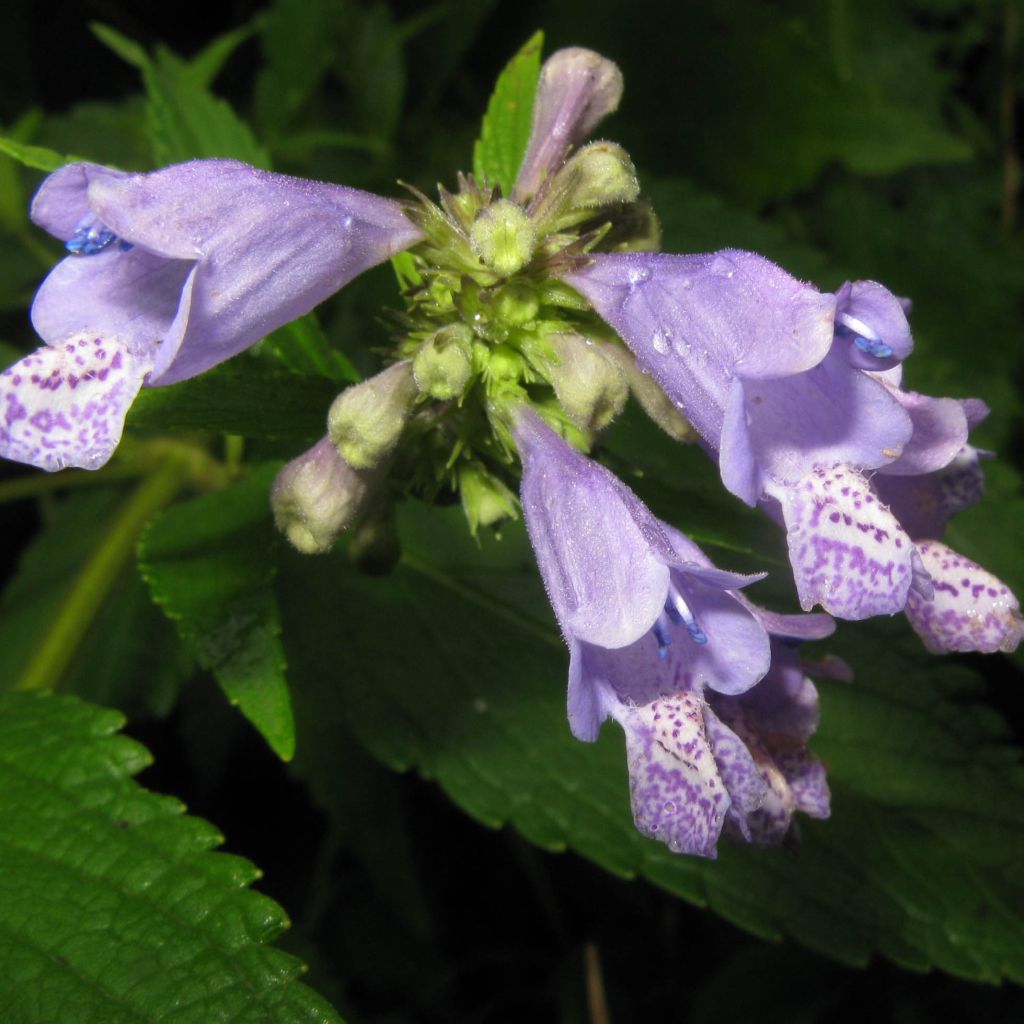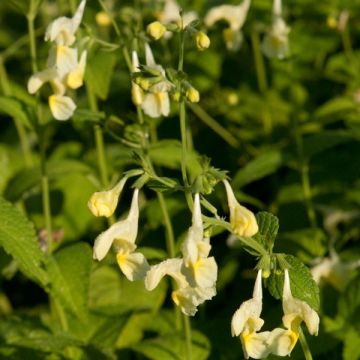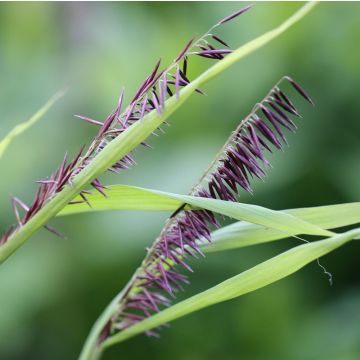

Nepeta subsessilis - Catnip


Nepeta subsessilis - Catnip


Nepeta subsessilis - Catnip


Nepeta subsessilis - Catnip


Nepeta subsessilis - Catnip


Nepeta subsessilis - Catnip


Nepeta subsessilis - Catnip


Nepeta subsessilis - Catnip


Nepeta subsessilis - Catnip
Nepeta subsessilis - Catnip
Nepeta subsessilis
Japanese Catmint
One stem (I would have appreciated a slightly more established young plant), in good condition and already flowering. It's too early to say how well it will take root, but it shouldn't be too much of a problem. Do you advise cutting the flower to promote rooting and branching from the base rather than flowering?
Oriane, 16/05/2023
Special offer!
Receive a €20 voucher for any order over €90 (excluding delivery costs, credit notes, and plastic-free options)!
1- Add your favorite plants to your cart.
2- Once you have reached €90, confirm your order (you can even choose the delivery date!).
3- As soon as your order is shipped, you will receive an email containing your voucher code, valid for 3 months (90 days).
Your voucher is unique and can only be used once, for any order with a minimum value of €20, excluding delivery costs.
Can be combined with other current offers, non-divisible and non-refundable.
Home or relay delivery (depending on size and destination)
Schedule delivery date,
and select date in basket
This plant carries a 12 months recovery warranty
More information
We guarantee the quality of our plants for a full growing cycle, and will replace at our expense any plant that fails to recover under normal climatic and planting conditions.

Would this plant suit my garden?
Set up your Plantfit profile →
Description
Nepeta subsessilis, catmint, forms a bushy, upright and branching plant with wide light green leaves. The foliage is topped all summer by large light blue flowers. It is a large nepeta that loves moisture and heavy soils. It can be used in the same way as lavender, as edging or in flower beds and large pots.
Nepeta subsessilis belongs to the lamiaceae family. It originates from the slopes of humid mountains in Asia. This perennial forms a dense and bushy clump of at least 1.20m (4ft) high, with a minimum width of 50 cm (20in), spreading rapidly through its rhizomes. It flowers from June to August with bright light blue spikes, 3 cm (1in) long. The nectar-rich flowers attract a large number of bees and butterflies. The foliage is medium green, and the ovate, toothed, smooth leaves are 8 to 10 cm (3 to 4in) long and aromatic. It is one of the tallest species and also one of the most capable of withstanding high atmospheric humidity. Its leaves are attractive to cats.
Nepeta subsessilis is easy to grow, preferring moist, rich soil in a sunny location. It tolerates dry, poor and rocky soils but with less abundant flowering. It is not as drought-resistant as most nepetas but tolerates heavy soils. Nepeta subsessilis can be used as a border plant, on large slopes or in pots. Combine it with tall roses for a romantic atmosphere or with yellow-flowered perennials for a contrasting effect. It also pairs well with lobelias.
Fun fact: Catnip acts as a sort of drug on some cats. They start by looking up and moving their heads before rubbing against the plant for several minutes. The pleasurable reaction stops after 15 minutes and lasts for 2 hours. But don't worry, it will cause no long-term harm.
Report an error about the product description
Nepeta subsessilis - Catnip in pictures






Flowering
Foliage
Plant habit
Botanical data
Nepeta
subsessilis
Lamiaceae
Japanese Catmint
Himalayas
Other Nepeta - Catnip
View all →Planting and care
Nepeta subsessilis and its hybrids have great resistance to moist and clayey soils and a longer flowering period than lavender. If the clumps are pruned with hedge shears, they will bloom again, even more beautifully in autumn. The only thing they lack is fragrance. They are easy to grow in any well-drained or clayey soil, not too dry in June and July. In really heavy soil, incorporate compost or coarse sand at planting. Nepeta subsessilis prefers sunny locations but tolerates partial shade. It can tolerate short periods of drought.
Planting period
Intended location
Care
-
, onOrder confirmed
Reply from on Promesse de fleurs
Similar products
Haven't found what you were looking for?
Hardiness is the lowest winter temperature a plant can endure without suffering serious damage or even dying. However, hardiness is affected by location (a sheltered area, such as a patio), protection (winter cover) and soil type (hardiness is improved by well-drained soil).

Photo Sharing Terms & Conditions
In order to encourage gardeners to interact and share their experiences, Promesse de fleurs offers various media enabling content to be uploaded onto its Site - in particular via the ‘Photo sharing’ module.
The User agrees to refrain from:
- Posting any content that is illegal, prejudicial, insulting, racist, inciteful to hatred, revisionist, contrary to public decency, that infringes on privacy or on the privacy rights of third parties, in particular the publicity rights of persons and goods, intellectual property rights, or the right to privacy.
- Submitting content on behalf of a third party;
- Impersonate the identity of a third party and/or publish any personal information about a third party;
In general, the User undertakes to refrain from any unethical behaviour.
All Content (in particular text, comments, files, images, photos, videos, creative works, etc.), which may be subject to property or intellectual property rights, image or other private rights, shall remain the property of the User, subject to the limited rights granted by the terms of the licence granted by Promesse de fleurs as stated below. Users are at liberty to publish or not to publish such Content on the Site, notably via the ‘Photo Sharing’ facility, and accept that this Content shall be made public and freely accessible, notably on the Internet.
Users further acknowledge, undertake to have ,and guarantee that they hold all necessary rights and permissions to publish such material on the Site, in particular with regard to the legislation in force pertaining to any privacy, property, intellectual property, image, or contractual rights, or rights of any other nature. By publishing such Content on the Site, Users acknowledge accepting full liability as publishers of the Content within the meaning of the law, and grant Promesse de fleurs, free of charge, an inclusive, worldwide licence for the said Content for the entire duration of its publication, including all reproduction, representation, up/downloading, displaying, performing, transmission, and storage rights.
Users also grant permission for their name to be linked to the Content and accept that this link may not always be made available.
By engaging in posting material, Users consent to their Content becoming automatically accessible on the Internet, in particular on other sites and/or blogs and/or web pages of the Promesse de fleurs site, including in particular social pages and the Promesse de fleurs catalogue.
Users may secure the removal of entrusted content free of charge by issuing a simple request via our contact form.
The flowering period indicated on our website applies to countries and regions located in USDA zone 8 (France, the United Kingdom, Ireland, the Netherlands, etc.)
It will vary according to where you live:
- In zones 9 to 10 (Italy, Spain, Greece, etc.), flowering will occur about 2 to 4 weeks earlier.
- In zones 6 to 7 (Germany, Poland, Slovenia, and lower mountainous regions), flowering will be delayed by 2 to 3 weeks.
- In zone 5 (Central Europe, Scandinavia), blooming will be delayed by 3 to 5 weeks.
In temperate climates, pruning of spring-flowering shrubs (forsythia, spireas, etc.) should be done just after flowering.
Pruning of summer-flowering shrubs (Indian Lilac, Perovskia, etc.) can be done in winter or spring.
In cold regions as well as with frost-sensitive plants, avoid pruning too early when severe frosts may still occur.
The planting period indicated on our website applies to countries and regions located in USDA zone 8 (France, United Kingdom, Ireland, Netherlands).
It will vary according to where you live:
- In Mediterranean zones (Marseille, Madrid, Milan, etc.), autumn and winter are the best planting periods.
- In continental zones (Strasbourg, Munich, Vienna, etc.), delay planting by 2 to 3 weeks in spring and bring it forward by 2 to 4 weeks in autumn.
- In mountainous regions (the Alps, Pyrenees, Carpathians, etc.), it is best to plant in late spring (May-June) or late summer (August-September).
The harvesting period indicated on our website applies to countries and regions in USDA zone 8 (France, England, Ireland, the Netherlands).
In colder areas (Scandinavia, Poland, Austria...) fruit and vegetable harvests are likely to be delayed by 3-4 weeks.
In warmer areas (Italy, Spain, Greece, etc.), harvesting will probably take place earlier, depending on weather conditions.
The sowing periods indicated on our website apply to countries and regions within USDA Zone 8 (France, UK, Ireland, Netherlands).
In colder areas (Scandinavia, Poland, Austria...), delay any outdoor sowing by 3-4 weeks, or sow under glass.
In warmer climes (Italy, Spain, Greece, etc.), bring outdoor sowing forward by a few weeks.



















































